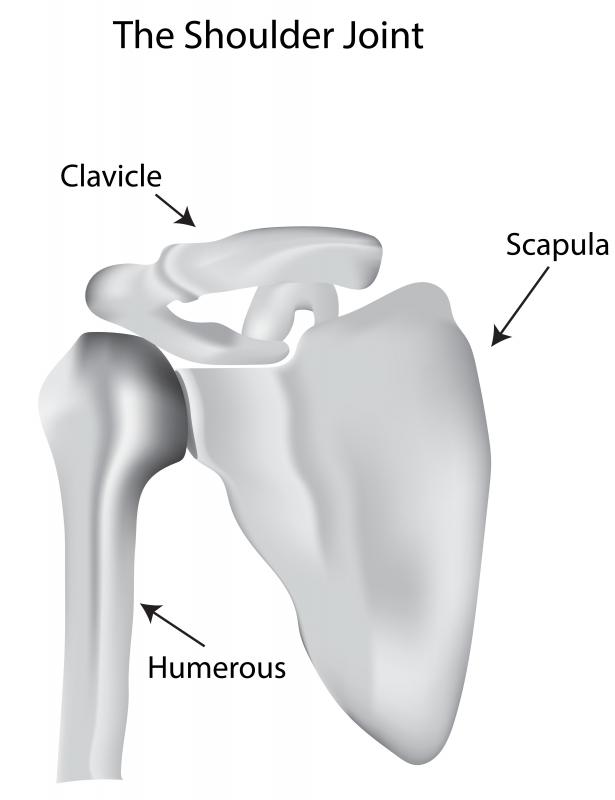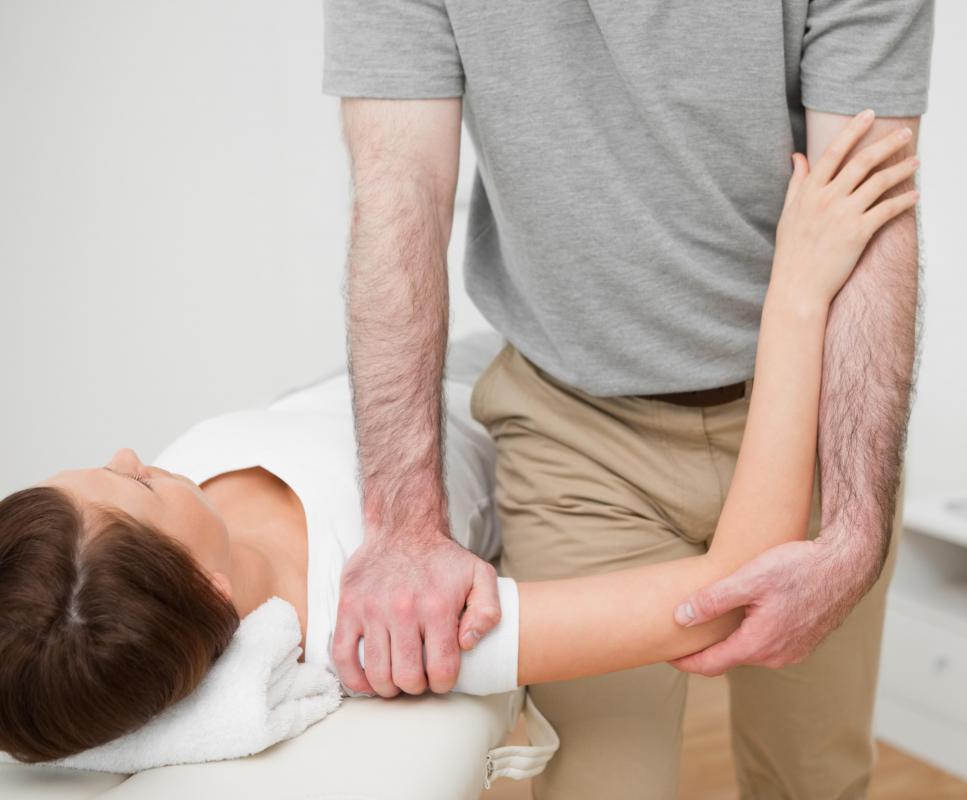At WiseGEEK, we're committed to delivering accurate, trustworthy information. Our expert-authored content is rigorously fact-checked and sourced from credible authorities. Discover how we uphold the highest standards in providing you with reliable knowledge.
What Is Joint Stability?
Areas where bones connect to one another are called joints. Hooked together through a series of specialized connective tissues — including things like ligaments, cartilage, and tendons that run through or next to the ends of the bones — this arrangement helps the body retain its shape. This complex system of uniting these different components of the skeletal system is also what gives the joint stability.
Though the bones within each joint are specifically shaped to “fit together,” by nature these unions are vulnerable places. Injuries to the connector portions of a joint can occur easily and threaten joint stability, similar to trying to use a mop after the handle has been broken and taped back together. Not only does an injury to a joint jeopardize its strength, it can also endanger its overall integrity by weakening or stretching the linking musculoskeletal tissues surrounding it.

Joint stability begins with the exact placement and holding of different bones in a specific manner, usually end-to-end. If the structures that bond them loosen their ability to essentially clamp two bones together in close proximity, joint stability diminishes. When the unity is extremely disrupted, the bones move out of place, a condition called dislocation or subluxation. This can cause a weakening of the ligaments and tendons securing the bone in its place by bringing about small splits in the fibrous tissue called micro-tears.

The most common area of bone displacement occurs in the shoulder. The shoulder is comprised of a ball and socket type joint where the humerus, the long bone of the upper arm, slips out of the cup-like hollow of the shoulder. A compromise in joint stability, however, can occur anywhere in the body. Retrolisthesis, for example, is a posterior or backward slippage of a bone in the vertebrae or spine in relation to its neighboring spinal bone.

When joint stability is threatened, the body is unable to move properly and efficiently. Inflammation in the form of pain, swelling and redness can inhibit movement. If the bone slips too far out of its natural position, as can be seen with severe subluxation of the shoulder, movement can be arrested altogether until the bones are replaced to their normal alignment.

The recovery of joint stability begins with proper positioning and healing of the structures holding the joints together. Once the inflammation diminishes, strengthening of the muscles, tendons and ligaments will aid in improving stability. In extreme cases, joint stability requires a method of securing the bones together, either by using metal rods to pin the bones together, or by a surgical procedure called fusion, where the bones are permanently bound together.
AS FEATURED ON:
AS FEATURED ON:














Discuss this Article
Post your comments